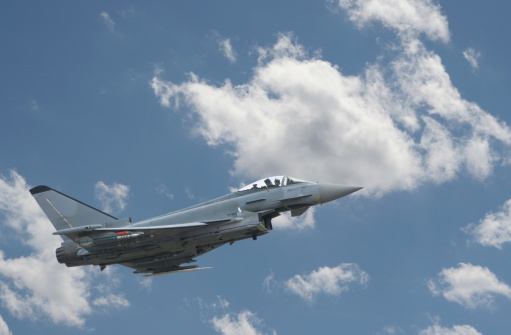For decades, the U.S. military has maintained air superiority over its rivals in various conflicts worldwide. However, defence experts and analysts sa
For decades, the U.S. military has maintained air superiority over its rivals in various conflicts worldwide. However, defence experts and analysts say that China is constantly improving its air power, so the United States cannot rely on its air superiority for long. At last month’s Air Force Association conference, U.S. Air Force Chief of Staff General Charles Brown Jr. said, “The Chinese Air Force has become the largest aviation force in the Indian Pacific (Indo-Pacific) region. It’s under our noses. ”
Brown predicted that the Chinese Air Force could end the U.S. Air Force’s lead by 2035. At the conference, U.S. Army Lt. Gen. S. Cullen Haino warned that the United States was not moving at the pace the Chinese air force was advancing. According to him, in some important areas, we are behind them today, and this is not a problem of tomorrow but a matter of today. Haino told reporters that as a person with access to sensitive information, he believes the Chinese Air Force competes with the development of the U.S. Air Force. “The light is turning red now,” he warned.
Related: The number of Chinese living in Pakistan will reach 5 million
Chinese Air Force Demonstrates Its Air Force
About 150 Chinese Air Force fighter jets recently flew over Taiwan’s airspace, including its most advanced J-16 fighter jets and H-6 bombers. China’s move is being hailed as an expression of its air power. The United States has expressed concern. Eric Hagen Botham, an MIT Center for International Studies researcher, says the Chinese Air Force is unveiling a complete package of all its capabilities. They are also bringing forward anti-submarine planes. According to an article published on the U.S. Air Force website, U.S. Air Force Secretary Frank Kendall mentioned China 27 times, Russia three times and Afghanistan only once at the Air Force conference last month. According to the article, Kendall had stressed in his address to the conference that the United States would have to work on new technology to “intimidate” China. Reacting to Kendall’s statement intimidating China, Wang Wei, a senior Chinese air force official, said the U.S. Air Force was ready to “meet” him in the air if it wanted to.
Where can the U.S. Air Force lead
Christina Girafola, a U.S. think tank RAND Corporation policy researcher, told VOA that the Chinese Air Force’s recent flights to Taiwan reflect its improving capabilities. “The growing capability of the Chinese Air Force will further complicate air operations in the Indian Ocean region,” he said. Timothy Heath, a senior defence researcher at RAND Corporation, says the Chinese Air Force still lags behind the U.S. Air Force in some technical capabilities. But its infantry would threaten possible U.S. intervention during a war in Taiwan. Timothy said that because of its proximity to Taiwan, the Chinese military could use surface-to-air and anti-ship ballistic missiles in any possible operation by U.S. navies and bases. He said the capability could be very useful for the Chinese air force to counter any interference in Taiwan.
Related: Will the U.S. drop an atomic bomb on China with its modern B-21 aircraft?
Experts say that in case of any air war in Taiwan, China will have a lead anyway, as Taiwan is only 161 km away from its waters. The U.S. air base in Japan is 700 km away, and the U.S. island of Guam in the Pacific Ocean is 2700 km away. Peter Leighton, a fellow at the Griffith Asia Institute in Brisbane, Australia, says the U.S. Air Force can maintain its lead over Taiwan’s airspace for one to two hours.
But more than that will not be possible. In an interview with the Air Force Times last month, U.S. Air Force Secretary Frank Kendall said it was an assumption that the United States was a dominant air force. He says we have air superiority, but things change when you reach a thousand miles around China.
According to a 2015 RAND Corporation study, although the United States still has the aerial advantage, the steady increase in Chinese air capability and the use of new technologies remain a threat to the United States. Also, in 2016, a U.S. Department of Defense study said that by 2030, the United States could face stiff competition in difficult situations where its ability to maintain air superiority could be jeopardized.
Peter Leighton told VOA that a 2016 U.S. Air Force study also found that the United States was on a path to losing its air superiority during the war in remote areas. Given these concerns, he said that the U.S. Air Force has launched an equipment modernization program in which aircraft equipped with new technology, like B-21 bombers, will be added to the Air Force. However, he said that by 2030, all these measures may not make much difference.

COMMENTS